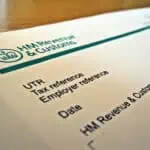Guide to Payments on Account
Reading Time:
One thing that keeps happening to me recently is that I’ll get calls from a client after their self-assessment return is submitted asking why they are paying double their liability even though they have already approved the report for submission.
The reason for this is ‘Payments on Account’.
Now, if this is your first time hearing about these then I can only express my regret that you have to pay them. Fret not though as the old saying goes, “It’s all swings and roundabouts.” You pay more on the first return, yes, but you pay less on the last return also.
These existed for a while, but more recently, HMRC has started to enforce these payments. The reason for this is that initially, people would not pay them and would often pay their liabilities late. For HMRC, this meant waiting for 9 months after the year-end in question before they could start chasing people for money. With payments on account, they can now chase you for money in advance.
What are Payments on account
Simply, the payments on account are the liability of your next return. To clarify, say we have just completed your 2018/19 self-assessment tax return and sent it to you for approval. Your liability for the year is £1000. You’ll also have to make two payments on account for £500 each (equalling the £1000 liability) against your 2019/20 return.
The thing is, your actual liability for the 2019/20 year when the time comes to complete that return might not be £1000 again. In this case, if the liability is less it will reduce the amount you have to pay against the payments on account for the 2020/21 year. If your liability is more? Then your liability will increase to encompass it.
Let’s show you how this works with figures to make it a bit clearer.
Year 2018/19
- Liability = £1000
- Payment on Account against 2019/20 part 1 = £500
- Payment on Account 2019/20 part 2 = £500
2019/20 with £800 liability
- Liability before previous payments on account included = £800
- Previous payments on account = £1000
- Liability after previous payments on account = -£200
- Payment on account against 2020/21 part 1 = £400
- Payment on account against 2020/21 part 2 = £400
Total to pay = £600
2019/20 with £1200 liability
- Liability before previous payments on account included = £1200
- Previous payments on account = £1000
- Liability after previous payments on account = +£200
- Payment on account against 2020/21 part 1 = £600
- Payment on account against 2020/21 part 2 = £600
Total to pay = £1400
Non-Requirement for payments on account
I’ve shown that the payments on account against the following year are set at 50% of the liability (more or less depending on the circumstances). However, if you meet specific criteria, you will not have to make payments on account at all. These would be:
- The tax liability for the previous year was less than £1000 or,
- More than 80% of the tax liability for the year was collected at source (think PAYE)
Income, where tax is collected at source, can be that such as;
- PAYE income
- Income from Trusts
- Interest on a loan stock
To clarify the 80% rule. If the tax deducted from said income is more than 80% of the calculated liability, then there will be no payments on account.
Claim to Reduce the payments on account
Fun fact, you can reduce your payments on account by appealing to HMRC. It’s risky though.

If HMRC deems the reduction to be excessive, they can charge you a penalty. They will normally only charge these penalties where the claim to reduce the payments on account was done fraudulently or negligently, however.
To claim to reduce your payments on account, you need to write a letter to HMRC explaining the reasons why your payments on account should be reduced and by how much they should be reduced. This needs to be done before the 31st of Jan when the first payment on account is due. Doing this in the week before the 31st Jan is probably a bad idea too as it will not give HMRC enough time to receive and review your letter.
Penalties on late payments
Normally, where tax is paid late, HMRC would charge interest on the overdue tax. This includes the payments on account where they differ from what originally should have been paid.
Say for 2018/19 you had payments on account initially against the 2019/20 year of £8000 each as the liability for 2018/19 was £16,000 but managed to get them reduced to £5500 each instead as you anticipated your liability for 2019/20 was going to be £11,000. The next year passes and you complete the 2019/20 self-assessment return and find your liability to be £13000 instead. This means that the payments on account should have been £6500 each. You would have paid £2000 less in payments on account than you should have.
You then pay this tax late on 19th February 2021 when you should have paid by 31st January 2021 (19 days late)
HMRC will penalise you by charging you interest on the liability from 31st January 2021 but for each of the payments on account, you should have paid an extra £1000 on 31st January 2020 and another £1000 on 31st July 2020. HMRC will charge you interest on those differences from when they should have been paid.
Let’s give you the break down to make this a little easier to digest.
2018/19
- Liability = £16,000
- Payment on account against 2019/20 part 1 = £8,000
- Payment on account against 2019/20 part 2 = £8,000
You then decide to claim to reduce your payments on account to £5500 each expecting your next liability to be £11,000 so instead
Liability = £16,000
- Payment on account against 2019/20 part 1 = £5,500
- Payment on account against 2019/20 part 2 = £5,500
2019/20
- Actual liability = £13,000 (so payments on account on the last return should have been £6500 each instead)
- Payment on account against 2020/21 part 1 = £6500 (not to be confused with last years payments on account that should have been £6500)
- Payment on account against 2020/21 part 2 = £6500 (not to be confused with last years payments on account that should have been £6500)
You pay this late on 19th February 2021
This means that on top of what you have to pay already for 2019/20 (£26,000) you then also have to pay an interest penalty charge on the liability going back to 21/01/2021 and the payments on account going back to 31/01/2020 and 31/07/2020 respectively.
Luckily, there is no interest to pay on late tax payments until after 30 days has passed.
For the payments on account, however;
From 31st January 2020
- £1000 x 58/365 x 3.25% = £5.16
- £1000 x 326/365 x 2.75% = £24.56
From 31st July 2020
- £1000 x 203/365 x 2.75% = £15.29
So total penalty interest to pay would be £45.01
On top of this, if the return itself was submitted late then there would be another £100 penalty on top of this.
Repayment interest

HMRC will chase you if you owe them money and penalise you for not paying. If you pay too much however and they already owe you a tax repayment, they may pay you interest instead.
Repayment interest will usually be added in the following circumstances:
- Payments on account were deemed to be excessive
- When a return is amended such that the tax liability decreases
- Where the tax reliefs become available after the return was filed
- (HMRC’s decision) Where a penalty is repaid to you.
It’s not all roses unfortunately, the interest rate HMRC uses to work out repayment interest is less than that used for penalty interest. The rate HMRC uses is the bank rate minus 1 with a minimum of 0.5%
The repayment interest is tax-free though so there’s no need to worry about further liability to pay to HMRC.
Interest will be worked out using the same calculation as that used for the penalties although the starting point in question will be the date the tax was paid or deadline of when the tax should have been paid if this is later.
There is an order in which HMRC calculates the repayment interest as well.
- The first tax to be repaid is deemed to be the balancing payment
- The second is the payments on account allocated equally between the two payments
- The last tax to be paid is the tax deducted at source under PAYE.
That covers the key points when it comes to payments on account. As always, if you have any further questions, please feel free to give us a call and we’ll be more than happy to help.






